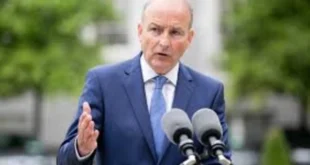Ireland’s coalition leadership and key ministers are set to finalize a significantly revised National Development Plan (NDP), laying out €100 billion in infrastructure investments for the period between 2026 and 2030. The updated blueprint, which will be unveiled alongside the Summer Economic Statement, aims to address critical gaps in national services and infrastructure while reinforcing the country’s economic resilience.
Focus Areas: Housing, Transport, Energy, and Utilities
Public Expenditure Minister Jack Chambers confirmed that the new NDP will direct €100 billion toward major sectors including housing, public transport, energy systems, and water infrastructure. He also indicated that a further €100 billion is earmarked for the subsequent five-year term, extending into the 2030s. These long-term commitments are designed to both close service delivery gaps and enhance Ireland’s international competitiveness.
Tánaiste Simon Harris characterized the new development plan as a “step change” in Ireland’s infrastructure strategy, highlighting the scale and ambition of the upcoming investments. While top-level budget allocations for each department and utility will be made public immediately, the comprehensive list of individual projects will not be available for several months.
Navigating Uncertainty with Prudent Planning
Speaking ahead of the announcement, Harris emphasized that this year’s Summer Economic Statement would be shaped by an unprecedented level of global economic uncertainty. “We are working to develop economic projections during a time of serious volatility,” he noted, underlining the need for cautious and targeted spending. He also stressed that government decisions in the coming months will prioritize safeguarding employment, encouraging investment, and maintaining economic stability.
Departmental Implementation and Monitoring Strategy
Minister of State at the Department of Transport Seán Canney outlined the government’s plan for ensuring effective execution of the NDP. Each department will receive a broad funding envelope and be tasked with preparing a five-year “implementation plan” that identifies specific goals and shovel-ready projects.
Speaking on RTÉ’s Morning Ireland, Canney explained that this structure provides flexibility for departments to prioritize and launch projects that are ready to proceed, helping to accelerate progress. “This allows us to hit the ground running and assess how well departments and local authorities are delivering, particularly in areas like housing,” he said.
He added that ongoing monitoring of departmental plans will offer greater visibility into performance and accountability across sectors.
Pressing Ahead Despite Global Trade Risks
Addressing concerns about trade tariffs and broader geopolitical instability, Canney acknowledged the uncertainty hanging over long-term planning efforts. However, he insisted that postponing development until all risks are resolved would be short-sighted.
“The tariff issue is the most significant threat to our planning, but waiting for complete clarity would only delay essential infrastructure,” he stated. He emphasized the importance of progressing with foundational investments now, while continuing negotiations within the EU to find a long-term resolution to the tariff dispute.
“We must plan proactively for the next five years,” Canney concluded, “even as we work to bring more certainty to the broader economic landscape.”
This sweeping investment framework is expected to set the tone for Ireland’s infrastructural and economic direction well into the next decade, with clear goals for immediate delivery and long-term development.
 The Daily Star Ireland
The Daily Star Ireland

